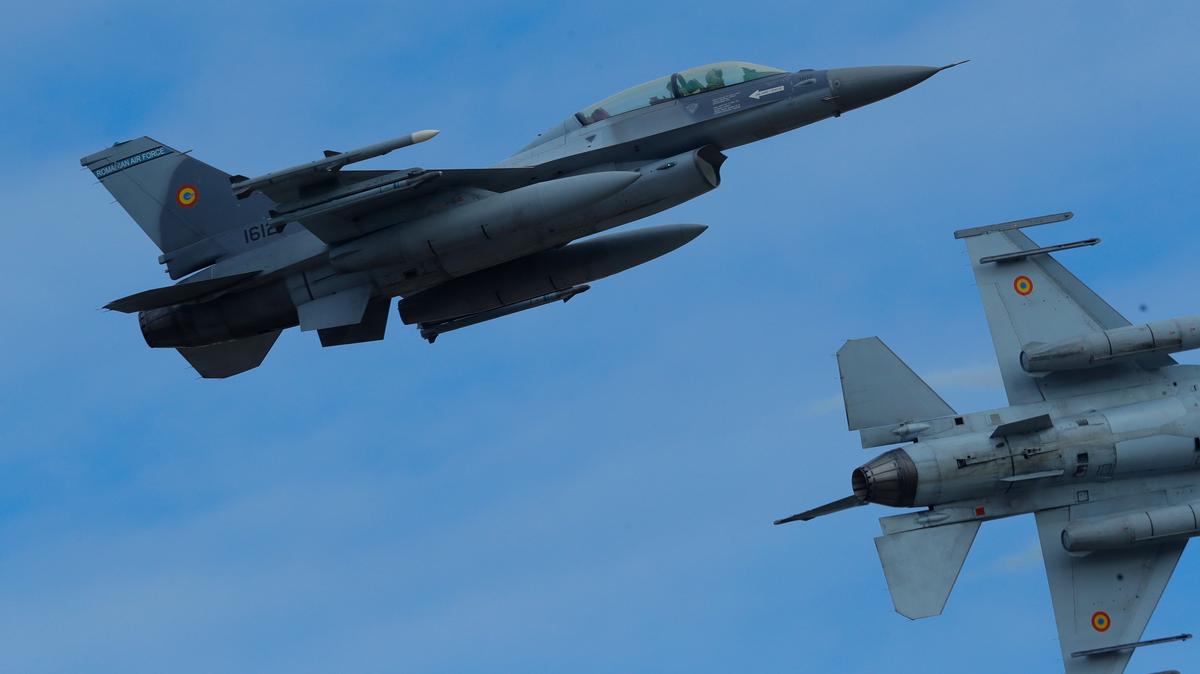Since Washington gave the go-ahead for its NATO allies to supply US-made F-16 fighter jets to Ukraine last summer, a group of 14 countries has committed to delivering around 80 of the aircraft to the Ukrainian Air Force (UAF) as well as training the scores of pilots required to fly them.
Denmark, Belgium, the Netherlands and Norway have committed to supplying the largest number of the fighter jets, and groups of Ukrainian pilots have been receiving training to fly F-16s in the US, UK, France, Denmark and Romania.
With the arrival of the first batch of F-16s in Ukraine expected at any moment, Novaya Europe looked at whether the state-of-the-art aircraft will finally hand aerial superiority to the UAF or not, and heard expert concerns that the UAF simply won’t have a sufficient number of trained pilots to use the fighter jets to their full capacity.
Foreign promises
The exact number of aircraft currently at the disposal of the Ukrainian Air Force (UAF) is unknown, but The Military Balance, an open-source directory of military forces published by The International Institute for Strategic Studies, reported in early 2022 that the UAF numbered approximately 45,000 servicemen, and had 124 combat aircraft and 63 transport and specialised aircraft at its disposal.
What is clear is that the UAF stands to benefit immensely from the delivery of F-16s. The relatively weak 2023 Ukrainian counteroffensive has left the nation vulnerable to Russian advances, further exacerbated by an ever-evolving set of conditions imposed by Washington on how US-supplied weapons can be used on Russian territory.
Though both militaries are experiencing shortages of armaments, munitions and soldiers, the arrival of the F-16s could, according to experts at the Center for Strategic and International Studies (CSIS), “create the conditions for a much-desired breakthrough in the war”.
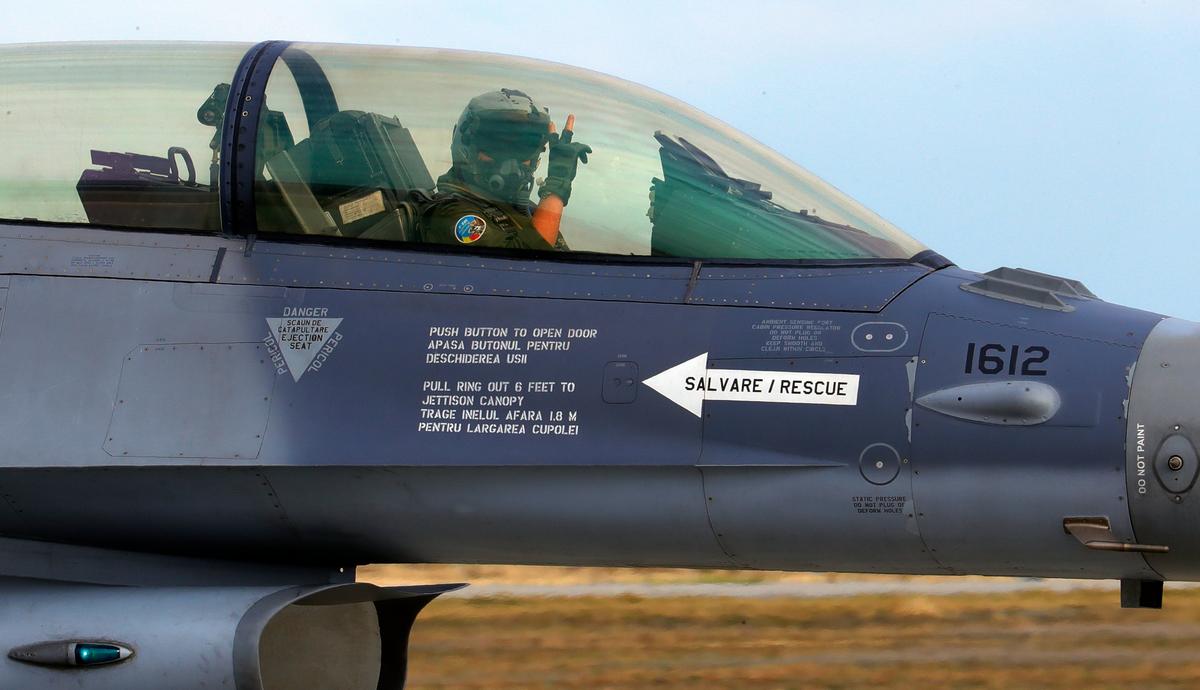
A pilot in the cockpit of an F-16 Falcon at the opening ceremony for the European F-16 Training Center, in Borcea, Romania, 13 November 2023. Photo: EPA-EFE/Robert Ghement
“With the right strategy, doctrinal approach, logistical support, and training, F-16s could provide a critical advance in enhancing Ukraine’s border defence and establishing localised air superiority, significantly bolstering Ukraine’s position on the ground,” a recent CSIS analysis read.
Despite the modernisation of the UAF over the past decade, it was still widely regarded as a relatively weak military force at the outset of the war. “From the very beginning of the full-scale invasion, many were surprised that the Russians could not quickly deal with Ukrainian aviation,” Israeli military observer David Sharp told Novaya Gazeta Europe.
The UAF became far more effective once its allies began supplying it with munitions, enabling it to strike targets in Russian-occupied territories accurately. However, according to Sharp, NATO weapons would be far more effective if launched from Western aircraft.
Despite the modernisation of the UAF over the past decade, it was still widely regarded as a relatively weak military force at the outset of the war.
While Su-24 bombers are capable of launching some types of French and British air-launched cruise missiles, they are unable to “control them in flight,” according to military expert, flight instructor, and Armed Forces of Ukraine reserve colonel Roman Svitan, who added that “if the equipment for launching these missiles can be installed on the F-16, the strikes will become even more accurate.”
Since Russia’s full-scale invasion, the UAF has suffered significant losses. At least eight MiG-29 aircraft, eight Su-24 bombers and several other military transport aircraft have been shot down or destroyed. In particular, Ukraine’s Starokostiantyniv airfield has been subject to a barrage of Russian missile attacks.
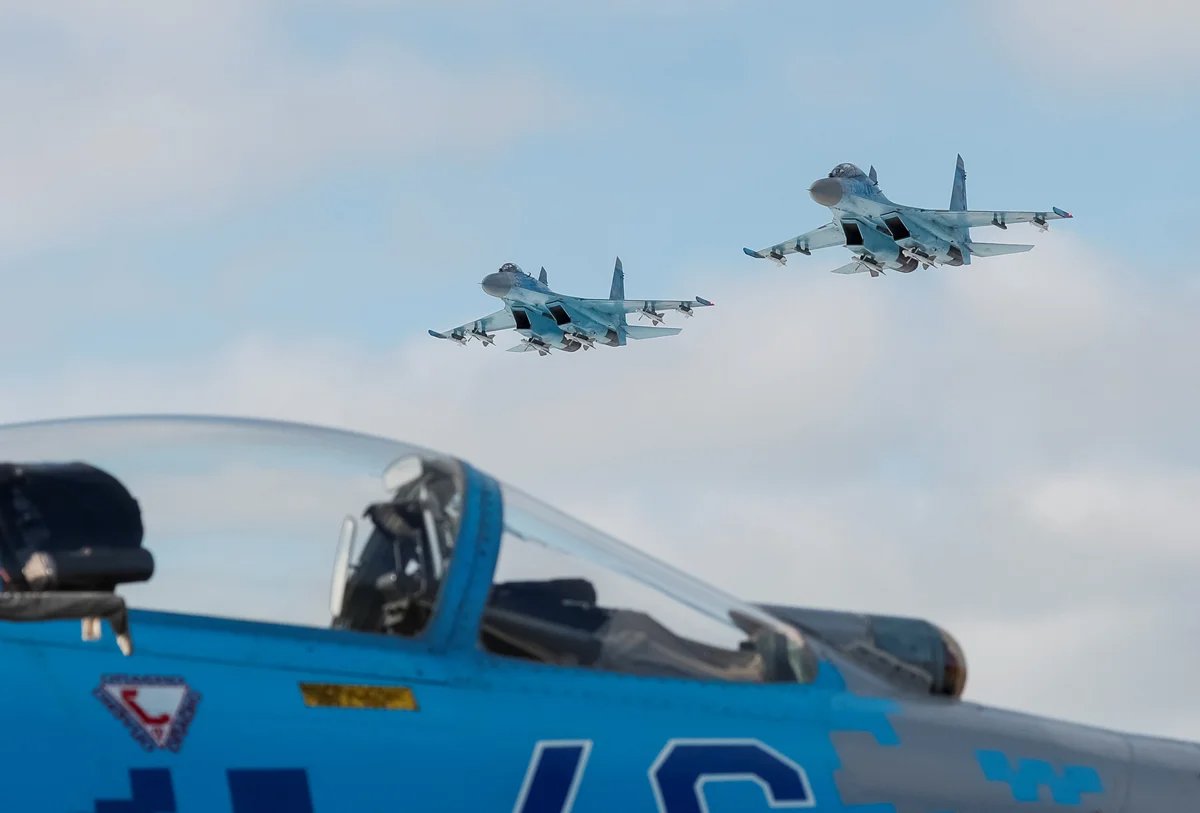
Ukrainian Su-27 fighter jets at a military air base near Zhytomyr, Ukraine, December 6, 2018. Photo: Gleb Garanich / Reuters / Scanpix / LETA
Svitan believes the size of the UAF to be roughly the same in 2024 as it was in 2022 in terms of aircraft numbers, due to the replenishment of shot down Ukrainian aircraft by allied aircraft gifted to Kyiv. The consignment of promised F-16s will only see Ukraine’s air force grow stronger.
Political will
Although the F-16s promised by Belgium, Denmark, the Netherlands and Norway will significantly bolster Ukraine’s military power, their delivery will also present various fresh challenges.
Highly skilled and trained pilots are needed to operate F-16s and there are very few pilots in Ukraine with the requisite expertise to do so. While dozens of pilots are already being trained in Europe and the US, in order to be use the fighter jets effectively, more ground personnel and pilots will need to begin training immediately.
While this will use up a lot of resources and could cost Ukraine valuable time in their already vulnerable capacity, Sharp argues that if Kyiv receives more F-16s than it can fly, the aircraft will in effect become more of a burden than an advantage.
While dozens of pilots are already being trained in Europe and the US, in order to be use the fighter jets effectively, more ground personnel and pilots will need to begin training immediately.
“A couple hundred F-16s could change the rules of the game in this war. But at the moment there is no talk of such supplies, and it is impossible to train 400 pilots quickly,” a Russian military expert who spoke on condition of anonymity told Novaya Europe.
“It will be years before the Ukrainian Air Force has enough experience to execute combat missions effectively,” CSIS analysts said in their report. The situation may be further complicated by the Ukrainian military’s lack of air-to-ground munitions, the launch of which is the main function of F-16s.
Finally, the CSIS report stressed the importance of Ukraine being able to maintain and repair its F-16 jets which, without the correct equipment, may prove difficult.
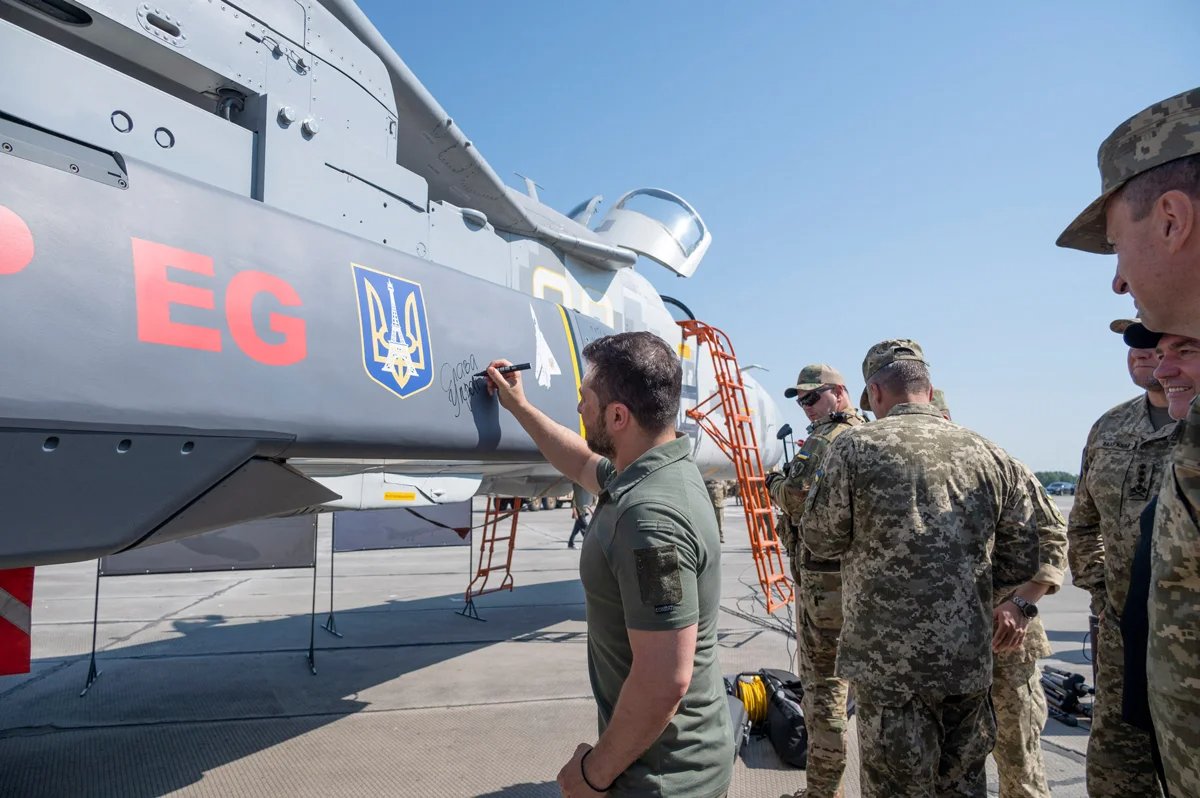
Volodymyr Zelensky celebrates Air Force Day with military personnel, 6 August 2023. Photo: Abaca Press / Sipa USA / Vida Press
Nonetheless, Svitan said he believed that Ukraine’s technical personnel were ready and that all necessary measures to prepare the country’s airfields had been taken. “Ukraine hopes to receive a brigade of at least three squadrons by the end of the year” or “40–50 aircraft,” he remarked.
Svitan added that he expected the F-16 transfer to go smoothly, as long as the US government’s political will remained strong, and said that the specific details of the F-16 transfer were likely to be addressed at next week’s NATO Summit in Washington.
“It is not yet known what kind of ammunition will be delivered with the aircraft or what radars will be installed on them,” the anonymous Russian military expert told Novaya Europe, adding that “modern Russian aircraft of the Sukhoi family have a more powerful radar, which gives them a certain advantage”.
Svitan strongly disagreed on that point. “One air brigade of the Armed Forces of Ukraine will be enough to completely seize the initiative in the skies over Crimea,” he said.
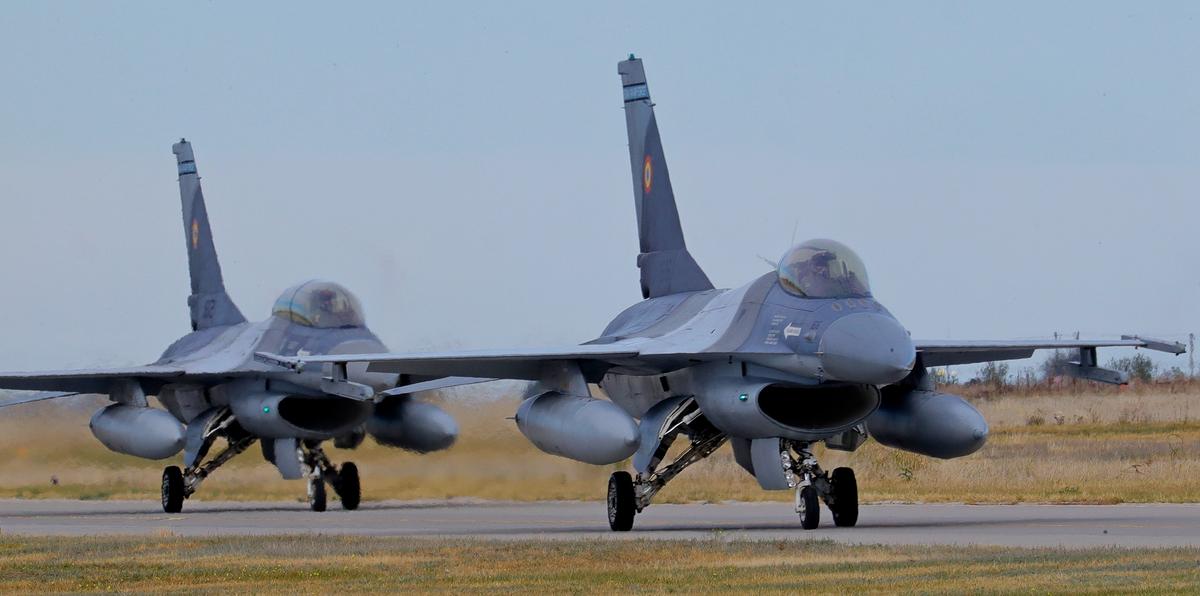
The opening ceremony of the European F-16 Training Center, at the 86th Air Base in Borcea, Romania, 13 November 2023. Photo: EPA-EFE / Robert Ghement
While experts disagree on the overall impact the F-16s will have on the war, there is a general consensus that if deployed properly, the F-16s will significantly boost Ukraine’s aviation strength.
Sharp maintains that the Russian Air Force is far more prepared than its Ukrainian equivalent for an intense and drawn out aerial war. According to some reports, Russia has now equipped its fighter jets with the longest-range air-to-air missile in the world, the R-37M. Although the missiles have not been able to stop Ukrainian aerial assaults, the formidable technology is just one example of Russia’s remaining advantages over Ukraine.
“Today, Ukrainian aviation performs only a limited list of tasks,” the Russian military expert said. “However, if the Ukrainian air force is significantly replenished with Western aircraft, they will be able to both attack ground and surface targets and strengthen air defence by shooting down Russian planes, helicopters, cruise missiles and drones.”
“A fully-fledged modern air force could change the course of the war,” according to Sharp, though he also stressed the importance of pilots having real combat experience and ground staff being fully trained. “Only such a system, fully operational, will produce significant results in the current war. However, that‘s still a long way off.”
Join us in rebuilding Novaya Gazeta Europe
The Russian government has banned independent media. We were forced to leave our country in order to keep doing our job, telling our readers about what is going on Russia, Ukraine and Europe.
We will continue fighting against warfare and dictatorship. We believe that freedom of speech is the most efficient antidote against tyranny. Support us financially to help us fight for peace and freedom.
By clicking the Support button, you agree to the processing of your personal data.
To cancel a regular donation, please write to [email protected]
